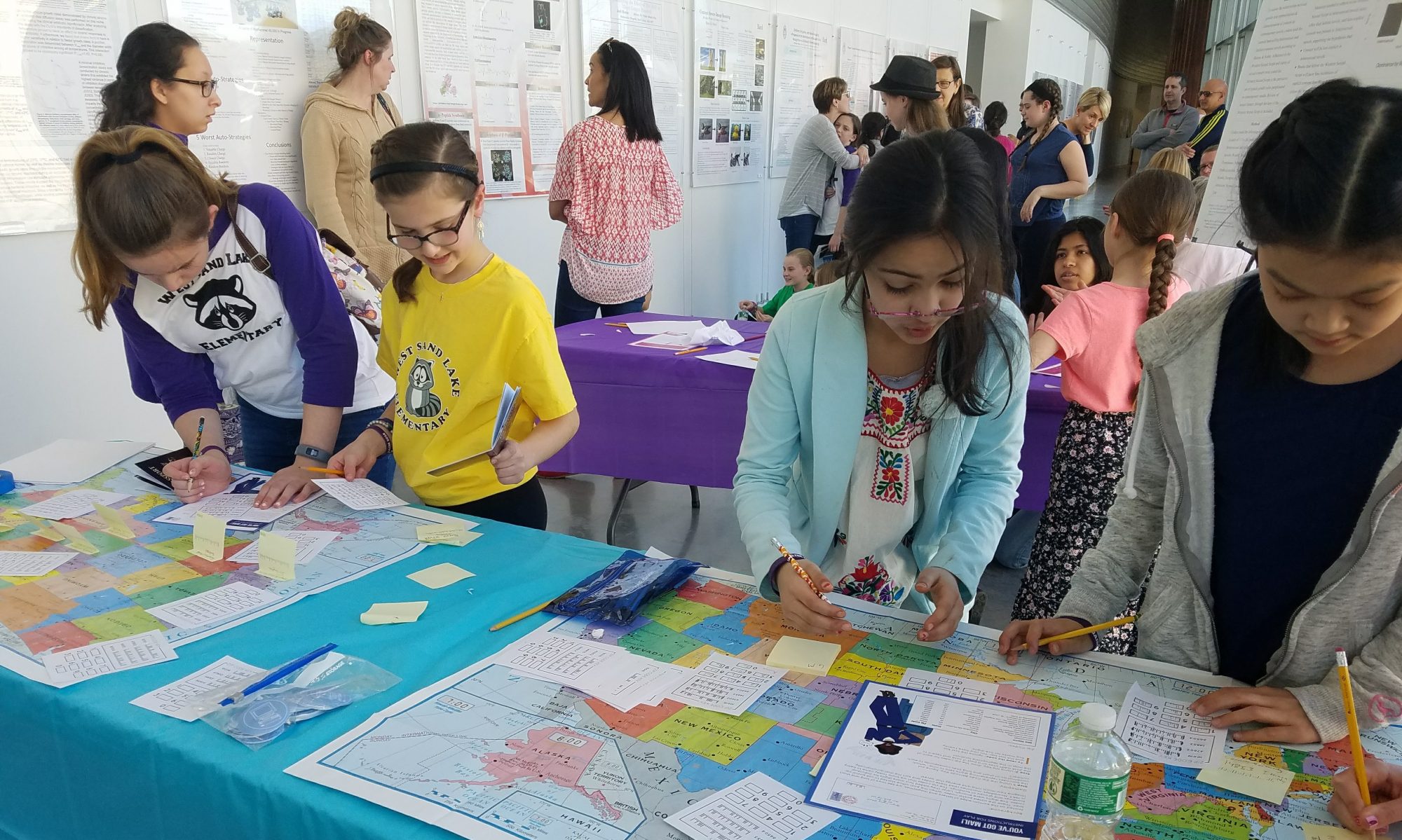I thought that this VW Bug was really cool when I found it on Facebook. Then I realized it was a tessellation! If you don’t know what a Tessellation is you should come to one of our upcoming Math Circles! Jeannette designed a really cool activity about tessellations.
Deltoidal Hexecontahedron
Japheth mentioned a few weeks ago MoMath’s “Math Monday” series. I was looking for activities to do this semester with our Circles, and I found this activity. There are many decks in my house that haven’t been used in years, so I decided to try one for myself.
This is my attempt a deltoidal hexecontahedron. (deltoid = kite, hexeconta = sixty). The construction turned out a little warped in some places; nevertheless, it was a good way to spend an afternoon!
MoMath Activities
For those of you who are just waiting for the Museum of Mathematics to open in Manhattan:
- The wonderful MoMath Activities are now available on their website. You’ve enjoyed building the Hyperbolic Parabola Model and the Hexatetra Flexagon at the Bard Math Circle. Now download and try them all!
- The Math Midway is at New Jersey’s Liberty Science Center through January 22, 2012.
- MoMath is sponsoring monthly Math Encounters at Baruch College in Manhattan. These are public talks that celebrate the spectacular world of mathematics. Most amazingly, these are FREE (but you must register to reserve your seat). Recommended for human beings age 12 to adult.
Math Circle Poster and Activity Session
The Reel Math Challenge
One of the Bard Math Circle parents sent us this link: The Reel Math Challenge, which is a contest sponsored by MATHCOUNTS. For those who don’t know, MATHCOUNTS is a national, middle school level math competition that promotes excellence in math education through problem-solving. More on that later.
The Reel Math Challenge is a team competition, and the goal is to make the best teaching video that explains a solution to one of the 270 problems in the MATHCOUNTS School Handbook. Each team consists of 4 student Team Members and 1 Team Advisor (an adult).
Interested? This could be a great Bard Math Circle activity, but time is running out. Send a friendly email to bardmathcircle@gmail.com if you’d like to volunteer to be a Team Advisor, and we’ll try to connect you with a team.
Now, more about excellence in math education through problem-solving. Each month we offer an engaging sheet of math problems. Math competitions such as
- Purple Comet (purplecomet.org)
- MOEMS (moems.org)
- MATHCOUNTS (www.mathcounts.org)
- Math Meets (www.mathmeets.com)
- AMC8 (amc.maa.org/amc8/)
Bit-Strings at Bailey Middle School
The Bard Math Circle traveled to Bailey Middle School on Kingston this past Friday; students worked on challenge problems based on a set done in Rhinebeck last April. For one of the problams, students were asked to find how many bit-strings of length n (n-bit strings) there are, given that a single bit is either a 0 or a 1. For example, there are four 2-bit strings (00, 01, 10, 11) and eight 3-bit strings (000, 001, 010, 011, 100, 101, 110, 111).
There are two strategies (maybe more!) that can be used to solve this problem. The first is to write out all of the bit-strings of length 2, 3, 4, etc, and try to find a pattern. The other is to create an algorithm for finding all bit-strings of length m from bit-strings of length m-1, and then write a formula using this information. Can you do it?
Math Mama Rocks
Here’s a great youtube video of a math circle in Richmond, CA, run by Sue VanHattum, called the Math Salon. Sue has set up her event in many ways similar to what we have done at the Bard Math Circle – a great selection of mathematical activities with enough structure to support curious children and their parents, but not so much to make it overly regimented.
Sue also writes the blog Math Mama Writes…, which besides regular reflections, offers lists of Math Education Books, Games and Math Books. What a great math resource!
May Problem and Solution!!!
- A|BCD
- AB|CD
- AC|BD
- AD|BC
- ABC|D
- ABD|C
- ACD|B
Yesterday my children and I attended the Math Circle at Kingston Library. On the way home I asked them each what their favorite part of the Math Circle was. Jordan said ” When I beat Jeannette at 21 Nim!” followed by her trademark giggle. Michael enjoyed the time the Xingye spent with him explaining square roots and especially liked that Xingye signed his cast in Chinese. Alisa liked playing with the magnetic shapes. I loved all the energy in the room and seeing parents and children having fun using their math skills!
Math Circle at Exploration School
Exploration School is a summer enrichment program housed at the campuses of St. Mark’s School (Junior– grades 4-7), Wellesley College (Intermediate– grades 8-9), and Yale University (Senior– grades 10-12). This summer I had the opportunity to work as an instructor at the Intermediate Program. My ingredients were students with a love of learning, a room to put them, and a bunch of math games and puzzles– my result was Math Circle!






